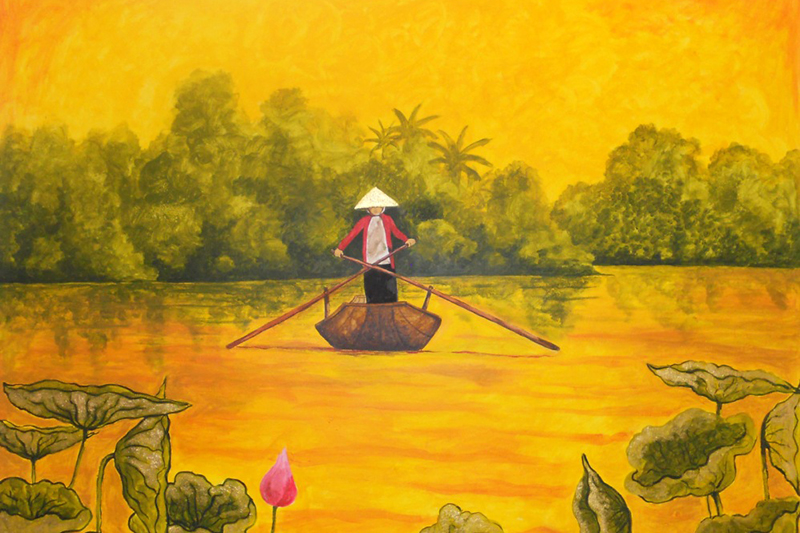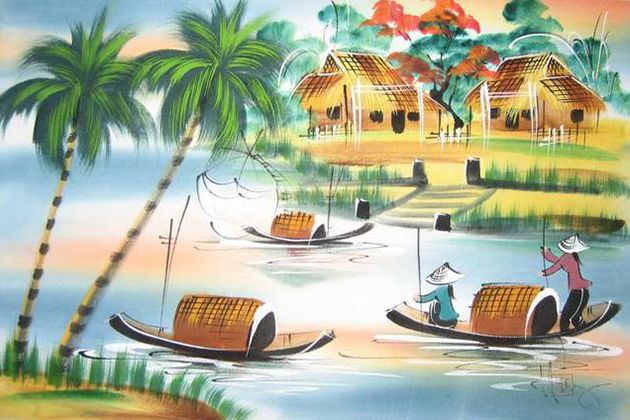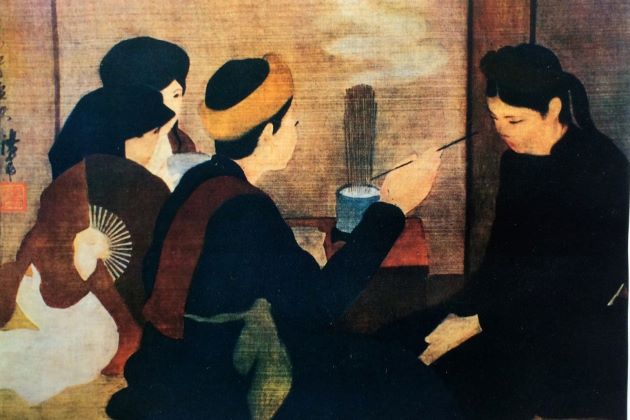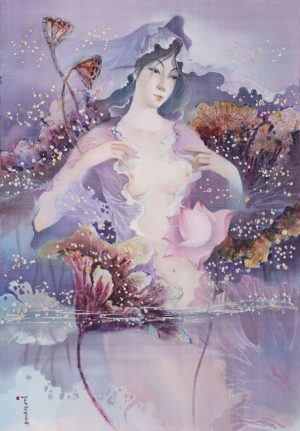Vietnamese Silk Painting is one of the unique traditional art in Vietnam. Along with the development of modern Vietnamese Artworks, silk painting has gone through many stages with changes in the content and technique of the expression. Also, there have been many advances in the processing of light and color.
The Origin of Vietnamese Silk Painting
The silk painting has appeared in Vietnam a long time ago. At that time, people were not trained in any kind of school. It was just an acquisition of experience from generation to generation. The ancient artisans have left a valuable heritage with national identity, which is the basis for the development of silk painting. In the Vietnam History Museum, there are several paintings of silk including portraits of Nguyen Trai and Phung Khac Khoan in the 15th and 16th centuries.
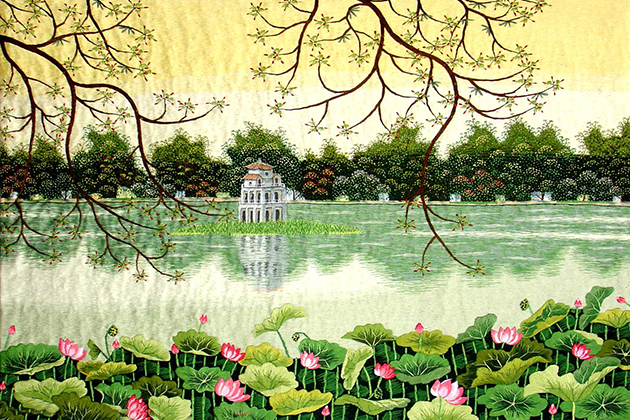
The art of silk painting in Vietnam has reached its peak of success during the 1930s. In 1925, the Indochina Fine Arts College, founded by a French artist Victor Tardieu, was established in Ha Noi. Some artists from this school have combined the influence of Western Arts with Oriental aesthetic, which brought a new nuance to the creation and marked the evolution of silk paintings.
The initial result in paving the way for Vietnamese silk painting by students of Indochina Fine Arts College was confirmed in the colonial exhibition in 1931. Vietnamese silk paintings have been introduced to the European public with works by Nguyen Phan Chanh, Tran Phenh, Nguyen Nam Phuong, To Ngoc Van,…In particular, the painting “Playing tug of war” of Nguyen Phan Chanh is rated as a work of high artistic value and has an exotic beauty.
Material & Technique in Vietnamese Silk Paintings
Material
Silk is the basis of silk painting in Vietnam. It can be said that in order to have a beautiful silk picture, the silk selection step must be very careful and meticulous. There are many types of silk, each with different weaving patterns or different sizes of silk yarn, thus giving different effects. Mastering the quality of each silk will help the artist to have the most flexible and effective treatment in his work.
After the silk substrate, color is also an indispensable material for painting silk. The colors used for drawing silk are usually watercolors. Formerly, colors were usually made from natural products, available and easy to find, such as black from bamboo charcoal, green from indigo leaves, white from scallops…, which is very durable but less fresh than modern watercolors. Nowadays, many artists use thicker and opaque kinds of colors such as tempera, colored powder, colored chalk to try on silk.
Techniques
In terms of silk-painting technique, the most distinctive feature between old and modern silk painting techniques in Vietnam is those old silk paintings are often painted directly on dry silk while modern silk painting is like dying and dying again on the silk.
Before painting, silk must be stretched to the wooden frame. The frame doesn’t need to be as thick and firm as the one used for oil painting, because the silk is fragile and does not need to be stretched too hard… Most of the silk painters often sketch thoroughly before expressing on silk. When painting, the artist often paints from light colors to dark colors and use several layers to create the beauty behind a silk painting. By using contemporary colors, Vietnamese silk paintings have a mysterious beauty because of their softness, sophistication, and flexibility of style.
The expressive value of silk painting in Vietnam.
Silk is a lightweight, fragile material so the artist hardly ever uses floating blocks of natural space or light and dark. They create their own space. For example, in “Playing Mandarin Square Capturing” of Nguyen Phan Chanh, he only focused on expressing the four little girls and the game. In “Washing vegetables by the pond”, there is only the girl with the vegetable basket, a water pot, and a pond bridge. Some artists use lines, colors to elicit the perspective. In “Winter”, Nguyen Thu used dark colors on the scarves and shirts of the girls but left a very light color on the trees behind. The way of drawing clear or blurry in silk painting is handled in a reasonable correlation depending on the author. Therefore, a silk painting can be seen near or far.
Thanks to silk painting, Vietnamese art has been promoted to the world because they are comparable to silk painting from other countries, including China or Japan. The topic for silk paintings includes people’s daily lives, portraits, history or landscapes,…Silk paintings have been exhibited in several exhibitions in Vietnam and also overseas since 2006. Through these exhibitions, we can see that the art of silk painting has been preserved and promoted as a crucial part of the Vietnamese art scene.

